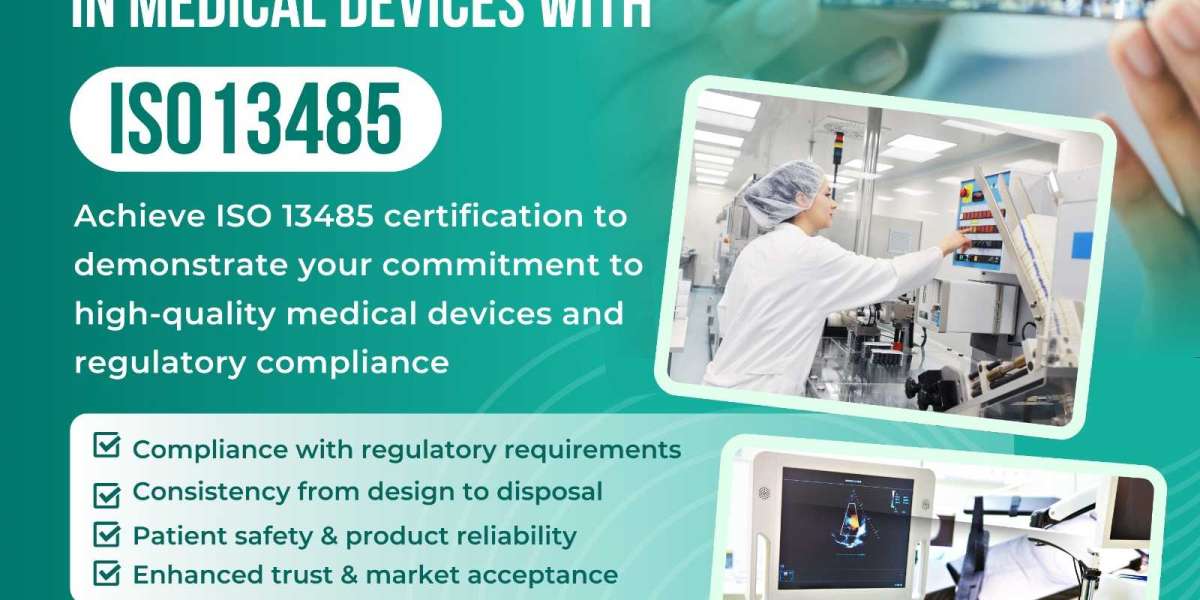ISO 13485 is an internationally recognized standard that outlines the requirements for a quality management system (QMS) specifically tailored for the medical device industry. It ensures that organizations consistently meet regulatory requirements and deliver safe, effective medical devices. While the certification involves every level of the organization, the role of top management is particularly crucial. Their leadership, commitment, and accountability form the foundation for achieving and maintaining compliance.
If your organization is seeking ISO 13485 Certification in Dubai, understanding these responsibilities is essential not only for initial certification but also for sustaining continual improvement. Let’s explore the core responsibilities of top management in maintaining ISO 13485 compliance.
1. Demonstrating Leadership and Commitment
Top management is responsible for ensuring that the QMS is integrated into the organization’s strategy and daily operations. Leadership is not just about approving policies; it involves active participation in decision-making, allocating resources, and communicating the importance of quality management across all levels. By visibly committing to ISO 13485 principles, leaders set the tone for the entire organization.
2. Establishing a Quality Policy and Objectives
A clear and effective quality policy is a cornerstone of ISO 13485. Top management must define, document, and communicate a quality policy that aligns with customer requirements, regulatory standards, and organizational goals. Alongside this, measurable quality objectives should be set to monitor progress. These objectives provide a benchmark against which the effectiveness of the QMS can be evaluated.
3. Ensuring Customer and Regulatory Focus
Medical devices are directly linked to human health, making compliance with customer and regulatory requirements non-negotiable. Top management must prioritize meeting these requirements by ensuring that processes are designed to minimize risks, prevent defects, and consistently deliver safe products. Their oversight ensures that the organization remains compliant with international regulations and adapts quickly to changes in legal or customer demands.
4. Providing Adequate Resources
Maintaining ISO 13485 certification requires appropriate resources, including skilled personnel, infrastructure, and technology. It is the responsibility of top management to assess these needs and provide the necessary support. This extends to training employees, upgrading equipment, and investing in new technologies to ensure the QMS remains robust and effective.
5. Conducting Management Reviews
Regular management reviews are mandatory under ISO 13485. These reviews help evaluate the effectiveness of the QMS, track progress toward objectives, and identify areas for improvement. Top management must ensure these reviews are conducted periodically and that outcomes are documented, communicated, and acted upon. This process demonstrates accountability and a commitment to continual improvement.
6. Promoting a Culture of Risk Management
ISO 13485 emphasizes risk-based thinking, particularly in relation to patient safety and product performance. Top management is responsible for embedding risk management into organizational culture. This includes identifying potential risks in design, manufacturing, and delivery processes and ensuring corrective actions are implemented. By promoting proactive risk management, leaders safeguard both compliance and reputation.
7. Ensuring Effective Communication
Effective internal and external communication is vital to maintaining ISO 13485 certification. Top management must ensure that employees are informed about quality objectives, compliance requirements, and their individual roles in achieving them. Additionally, communication with external stakeholders—such as customers, suppliers, and regulators—must be clear, transparent, and aligned with QMS goals.
8. Driving Continual Improvement
ISO 13485 is not a one-time achievement; it requires continuous monitoring and improvement of processes. Top management must champion this philosophy by encouraging innovation, addressing nonconformities, and leveraging data from audits, complaints, and performance reviews. Their leadership fosters an environment where improvement is seen as an ongoing journey rather than a destination.
9. Supporting External Audits and Certification Processes
Maintaining ISO 13485 certification involves periodic external audits. Top management must actively support these audits by ensuring the organization is prepared, cooperative, and transparent. Their involvement signals the seriousness with which the organization treats compliance and quality assurance.
10. Accountability for QMS Performance
Ultimately, top management holds accountability for the overall performance of the QMS. They must monitor key performance indicators, ensure objectives are met, and address shortcomings swiftly. Their accountability is not only a requirement of ISO 13485 but also a reflection of their responsibility toward patients, customers, and stakeholders.
The Role of Professional Support
Organizations in Dubai aiming to maintain compliance often turn to expert consultants for guidance. ISO 13485 Consultants in Dubai provide tailored solutions, training, and support in implementing and maintaining the standard. Similarly, ISO 13485 Services in Dubai offer end-to-end assistance, from gap analysis and documentation to internal audits and certification preparation. With professional support, top management can focus on strategic decisions while ensuring the technical aspects of compliance are handled effectively.
Conclusion
The responsibilities of top management in maintaining ISO 13485 certification extend far beyond oversight. From setting policies and objectives to fostering a culture of risk management and continual improvement, their role is central to ensuring compliance. For organizations seeking ISO 13485 Certification in Dubai, strong leadership is the driving force that sustains a reliable quality management system. By fulfilling these responsibilities and leveraging the expertise of ISO 13485 Consultants in Dubai, businesses can ensure long-term compliance, customer satisfaction, and market credibility.



